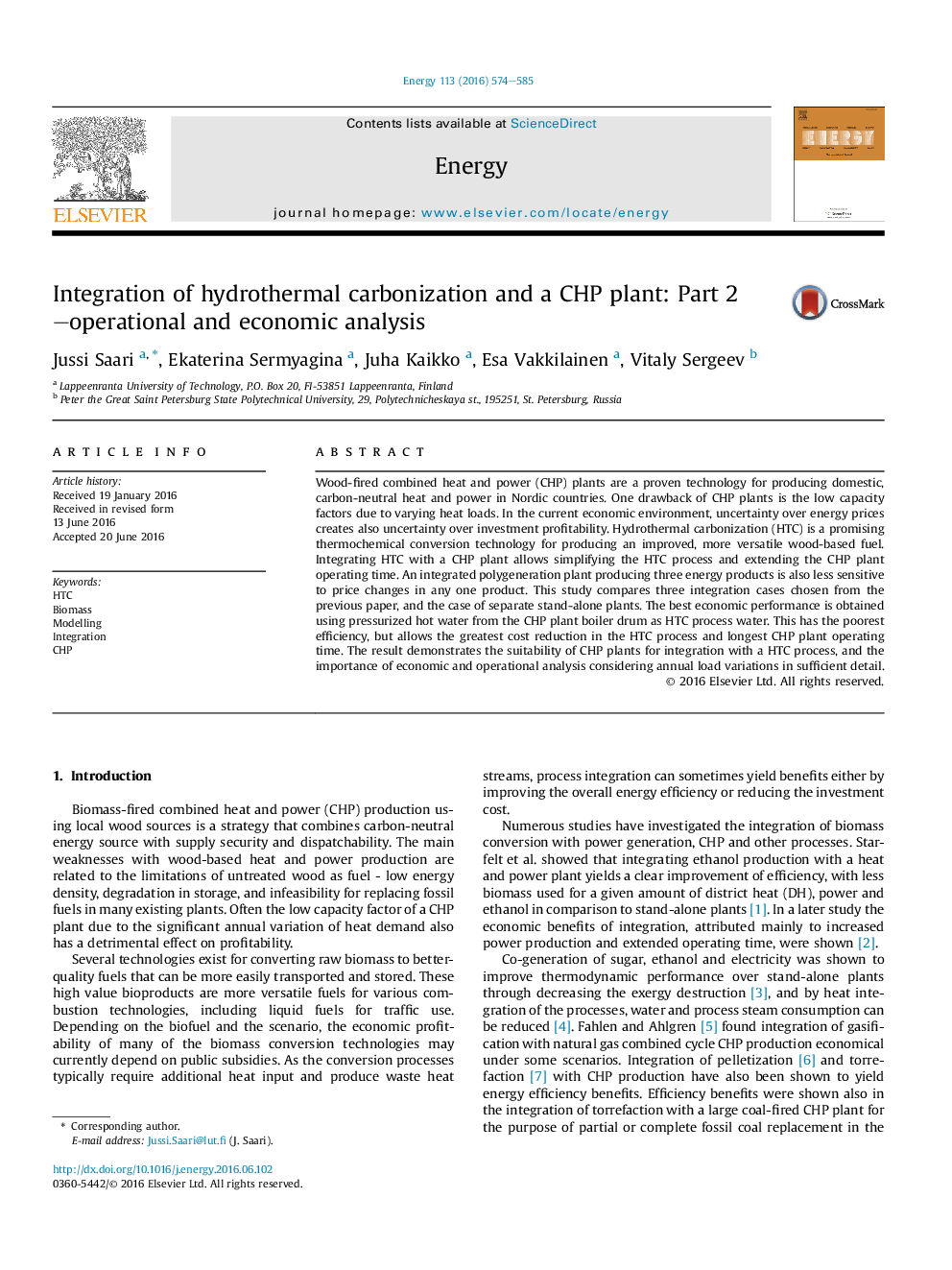| Article ID | Journal | Published Year | Pages | File Type |
|---|---|---|---|---|
| 1730763 | Energy | 2016 | 12 Pages |
•Integration of wood hydrothermal carbonization with a small CHP plant studied.•Operation and economics of three concepts and stand-alone plants are compared.•Sensitivity analysis is performed.•Results show technical and thermodynamic analysis inadequate and misleading alone.•Minimizing HTC investment, extending CHP operating time important for profitability.
Wood-fired combined heat and power (CHP) plants are a proven technology for producing domestic, carbon-neutral heat and power in Nordic countries. One drawback of CHP plants is the low capacity factors due to varying heat loads. In the current economic environment, uncertainty over energy prices creates also uncertainty over investment profitability. Hydrothermal carbonization (HTC) is a promising thermochemical conversion technology for producing an improved, more versatile wood-based fuel. Integrating HTC with a CHP plant allows simplifying the HTC process and extending the CHP plant operating time. An integrated polygeneration plant producing three energy products is also less sensitive to price changes in any one product. This study compares three integration cases chosen from the previous paper, and the case of separate stand-alone plants. The best economic performance is obtained using pressurized hot water from the CHP plant boiler drum as HTC process water. This has the poorest efficiency, but allows the greatest cost reduction in the HTC process and longest CHP plant operating time. The result demonstrates the suitability of CHP plants for integration with a HTC process, and the importance of economic and operational analysis considering annual load variations in sufficient detail.
